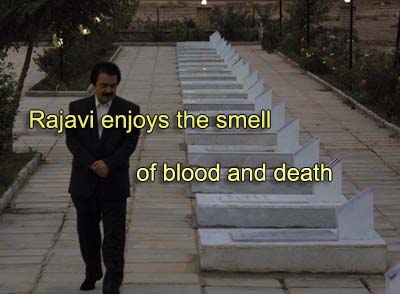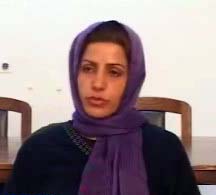An interview with Batool Soltani on MKO self-immolations – Part thirteen
Sahar Family Foundation: Ms. Soltani, in our last session, you mainly focused on theoretic and tenable aspects of suicide operations. Your explanations were nice but it would be much better if you elucidate the practical instances of suicides and self-immolations you have personally witnessed. There are reports of some cases committed for a variety of reasons. I mean how Rajavi reacted to these acts and analyzed them. Your explanations will shed light on ambiguities especially if the names of the victims are mentioned.
Batool Soltani: Well, many of these cases can be found happened within the organization. In many cases Rajavi exclusively referred to some instances as proofs when trying to inoculate his mentalities.
Of course, as I have already pointed out, such discourses were held only in the meetings of the Leadership Council and never leaked out. Bear it in mind that he never intended to compare anything with the opponent side or infer anything from these instances of suicide when referring to them. It was an issue discussed within the organizational sphere and, of course, deductions were generally related to internal relations. The main focus was differentiating between the holy and sinful kinds of suicide with the emphasis on romanticizing the suicide and describing it as a noble act which Rajavi theorized according to his interpretations.
I have to point out that some of these suicides were committed just following these meetings like the suicide done by Mehri Moussavi just as some had been recorded before. Of the significance was his skill in presenting examples that could well help to differentiate between the two, that is to say, the presented standards and motivations, which the ranking members were well aware of, behind these suicides could well help to identify whether it was esteemed a holy suicide for the cause of the leader and interests of the organization or despised a sinful suicide for individual weaknesses, flaws and ambitions. Of the suicides that offended Rajavi and made him erupt furiously to hold consequent lengthy meeting with the members of the Leadership Council was the suicide committed by Kamal Haddadi long after the beginning of these discourses. He was a ranking member of the Central Council and that was the cause for Rajavi to be sensitive about the incident.
A look at the list of the members of the Central Council at the time, dissolved after the initiation of the ideological revolution, indicate that he was a ranking commander deposed of his responsibility after the ideological revolution. The emphasis on him as an officer of high ranking is to know how Rajavi degraded such people when treating them for organizational concerns. Kamal was reported to have established a relation with a woman under his command.
The relation could be any organizationally unauthorized relation regardless of being ideological, emotional, moral or even a love affair. They said it was a love affair and the case was sent to Rajavi and Maryam to be dealt with. At the time Rajavi was stationed in Camp Parsian. Before transferring Kamal to Camp Parsian, Mahvash Sepehri began further investigation of the case and put Kamal in a prison cell called ‘Bangal’, an isolated, solitary confinement where they kept the culpable to be judged. She pressed him with recriminations and accused him of immoral relations with the woman. So harsh and disdainfully she treated Kamal that he could easily anticipate what awaited him before Rajavi. He could tolerate no more and committed suicide in his cell.
At the time, I was a ranking deputy in the Leadership Council and was present in the meetings particularly dealing with such cases. I remember the first words stated by Rajavi concerning Kamal’s suicide. He was much enraged by Kamal’s act and said he threw his corpse on the leadership’s table. I have to point out that Kamal’s suicide was never mentioned among the rank and file who thought he had died of a natural death. But all the members of the Leadership Council knew that he had died of psychological pressures impressed by Sepehri. In the very same meeting, Rajavi appreciated Sepehri and said Kamal deserved to be treated so contemptibly and unworthy way to commit suicide. Rajavi never mentioned anything about ideological deviation that could have affected Kamal because it could raise questions. Kamal was shown to have no ideological problem and that he had chosen his path rightfully; his death had to be looked and analyzed from a different angle to preserve the good image of the organization.
What Rajavi depicted was so easy to perceive. Among the members are those who set themselves on fire for the sake of the organization and leader’s interests; in contrast, some others commit suicide for deviant, immoral causes and threw their corpses on the table before the leader. Then he compared the different motivations behind the two acts. Those who committed suicide for selfish causes not only committed sin but also led the organization to the midst of a big problem hard to deal with. The former suicides solved a problem in the course of accomplishing a holy cause while the latter suicides burdened problems on the shoulder of the leader. People from each group lose their lives on their own but it is the contradictory motives that decides who is blessed or condemned; the former has succeeded to release himself of his own self to become selfless and attach to an ideological source without; the latter is a slave of his own self and is reluctant to discharge introspections in the arranged weekly ablution sessions to clean his inside.
Taking opportunity of Kamal’s case to illustrate intended motives of suicide, Rajavi presupposed that following the US invasion, the destiny of Mojahedin would be vague. We would be dispersed and sent to different parts of the world; a group to Iran, another to France, America or any other place. In that case, could we possibly carry the potentiality of being a mobile bomb ready to detonate to safeguard the interests of the leadership? To ideologically justify the suicide operations, he again referred to Kamal’s case and other similar cases of suicide for personal motivations; one killing himself for sexual impulses, another disappointed, flawed and depressed, and Kamal Haddadi who was in contradiction with himself and failed to appear before other members to confess his sins and purge himself. None of them, he said, had committed suicide for the sake of leader and their attachment to him. No status and value could be so noble as compared to that of setting oneself on fire for the leadership and Maryam.
Although motives for suicide varied, what differentiated between the individual and ideological motives, the former described as a sin in the Quran and the latter romanticized and glorified for organizational causes, was the pivotal point where one’s self met and attached itself with that of the leader who well directed the act onto the right path. It was no more suicide but martyrdom and even exceeded it in value. To give further explanation, he said; consider in this very moment something suddenly threatens my life as your leader. One of you may imagine that the threat is removed if you set yourself on fire. In his opinion, the suicide had committed a sin in risking his life to save the leader because the act was non-ideological and performed under no command by the leader; the suicide was now a foul corpse cast before the leader.
It was one of the instances Rajavi delineated and formulated the ideological suicide that differentiated it with a foul and sinful one; the holy suicide has to be performed only and purely by the permission and the command of the leader, otherwise it will be considered a big sin the ideological motives have spurred it. Thus, it can be concluded that the 17 June self-immolations, in contrast to Maryam Rajavi’s rejection to be instigated by the organization, were organizationally planned and orchestrated and approved by the leadership. None of the volunteers set themselves on fire entirely of their own volition; their acts to be esteemed holy, they had to follow the decree and command of the leadership. Does it mean anything else when they glorified the acts of Neda (Hassani) and Marzeh (Mojaveri), both died of the burning injuries, as holy feats? Their self-immolation before anything indicated the degree of their loyalty and submission to the leadership. These instances along with Rajavi’s ideological interpretation as well as his reference to the Quran as a subterfuge to justify his egocentric ambitions may lead us to the bottom of truth.
To be continued

 justified application of such operations? Were there any reliable historical facts to refer to or Rajavi relied only on his own inferences to justify such deeds? As Rajavi usually theorizes anything before putting it into action, it has to be necessarily true in this case as well. I believe these are key issues, hardly discussed in detail, to help develop a better understanding of such reprehensibly ideological mannerism. So I think you can better disclose untold aspects since you have been so close to the nucleus of decision makings.
justified application of such operations? Were there any reliable historical facts to refer to or Rajavi relied only on his own inferences to justify such deeds? As Rajavi usually theorizes anything before putting it into action, it has to be necessarily true in this case as well. I believe these are key issues, hardly discussed in detail, to help develop a better understanding of such reprehensibly ideological mannerism. So I think you can better disclose untold aspects since you have been so close to the nucleus of decision makings.  the organization is to volunteer for self-immolation. Does it mean that the organization reacts against the reluctant and how does it deal with such instances?
the organization is to volunteer for self-immolation. Does it mean that the organization reacts against the reluctant and how does it deal with such instances? organization from its very formation.
organization from its very formation. An interview with Batool Soltani on MKO self-immolations – Part 8
An interview with Batool Soltani on MKO self-immolations – Part 8  carries concerning himself, his responsibility and his relation with other cells. More specifically, there were other ranks who, because of their organizational responsibilities, knew the residence of the leadership and his/her visiting locations. Of course, this classified information vary in terms of sensitiveness and secrecy according to the responsibility of the members and their contact with higher rankings but the importance lies on the concentration of the information in the hands of the members who form the linking ring between others.
carries concerning himself, his responsibility and his relation with other cells. More specifically, there were other ranks who, because of their organizational responsibilities, knew the residence of the leadership and his/her visiting locations. Of course, this classified information vary in terms of sensitiveness and secrecy according to the responsibility of the members and their contact with higher rankings but the importance lies on the concentration of the information in the hands of the members who form the linking ring between others. 